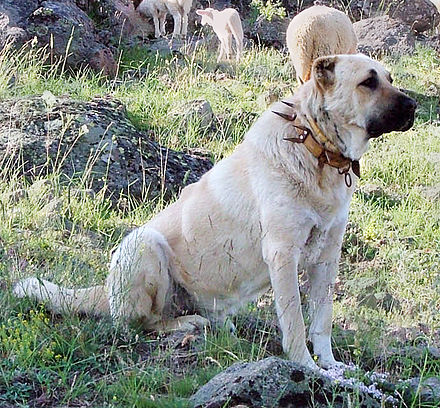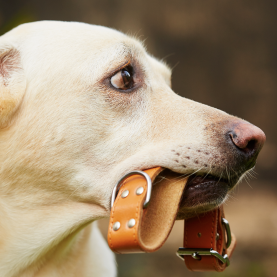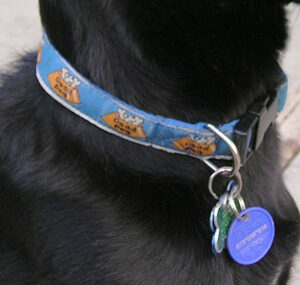advertisement
12 September 2022
It is speculated man’s bond with dogs began with wolves who began hanging around human encampments for scraps of food the humans discarded. While not yet part of human society, the wolves would have alerted the humans to dangers by their reactions when danger approached. Wolves being pack animals, could have easily adapted to the human presence and even begun to consider the humans as part of their pack, and the humans likewise would begin to see the wolves as a natural appendage to their world.
Eventually, the humans brought the wolves into their campsites. They were no longer just an appendage but officially part of the tribe. Since wolves and humans are both pack oriented and have similar social structures, this isn’t a difficult pairing to form. At this point, we can begin to call the wolves dogs, as it is at this juncture the wolves started evolving to fit in with their new pack.
advertisement
Once dogs were among humans, people would have wanted some way to control their new companions. Collars are a great way to limit the movements of dogs and keep them out of trouble. Likely the first collars were simply ropes tied around the animal’s neck. In this way, the humans could better direct the dogs and prevent them from wandering into places they weren’t supposed to go. It is likely dogs began to be trained for specific tasks as early dogs were working members of the tribe rather than pets.
It is natural for the early ropes to become more specialized collars to allow better comfort and mobility for the dog. Leather is a natural material to make the collars from as well as leather tethers. This would last longer and have more strength while being comfortable for the animal to wear.
 Dogs started their life with humans as working animals, and when agriculture began to be introduced, this relationship became even stronger. Dogs were trusted to herd livestock and protect them from predators, including their wolf ancestors. They were raised along with the herd animals, so they considered the herd part of their pack. As a way to even the playing field, spiked collars were introduced to give dogs an edge against predators if they had to fight to protect their herd. This type of collar started in ancient Greece. Predators often go for the neck as a vulnerable spot, and if this area is armored with a spiked collar, a would-be attacker will get a mouthful of sharp metal.
Dogs started their life with humans as working animals, and when agriculture began to be introduced, this relationship became even stronger. Dogs were trusted to herd livestock and protect them from predators, including their wolf ancestors. They were raised along with the herd animals, so they considered the herd part of their pack. As a way to even the playing field, spiked collars were introduced to give dogs an edge against predators if they had to fight to protect their herd. This type of collar started in ancient Greece. Predators often go for the neck as a vulnerable spot, and if this area is armored with a spiked collar, a would-be attacker will get a mouthful of sharp metal.
 Eventually, dogs became symbols of power and wealth. Kings, queens, and pharaohs would have ornate collars decorating their rare animals, demonstrating how much power they wielded. The dog became a status symbol. People who were not noble but had wealth or power began copying the tradition of having ornate dogs to display their wealth and power. Collars for these animals became extravagant, as well as the creation of extravagant dog breeds. These dogs were not working dogs but instead trophies of power.
Eventually, dogs became symbols of power and wealth. Kings, queens, and pharaohs would have ornate collars decorating their rare animals, demonstrating how much power they wielded. The dog became a status symbol. People who were not noble but had wealth or power began copying the tradition of having ornate dogs to display their wealth and power. Collars for these animals became extravagant, as well as the creation of extravagant dog breeds. These dogs were not working dogs but instead trophies of power.
Around the middle ages, dog collars began to display information about the dog’s job and position. As dog ownership began to become normal, they transitioned from work dogs or ornate pets to actual pets, and dog collars with a padlock started becoming a thing. The owner had the key and could prove ownership by unlocking the padlock. This is where dogs are truly becoming the lovable companions we know today. They began to serve no other purpose than an emotional companion for people.
advertisement
 In more modern times, collars began to serve as a way to attach the owner’s information to the dog. Collars also started having the dog’s name on them. Anyone who found a lost dog could contact the owner so they could come for their friend. In today’s world, dogs are even provided with tracking chips in the collar so the owner can use GPS to find their lost pooch. Some dogs even have a subdermal tracking chip so it can’t be lost.
In more modern times, collars began to serve as a way to attach the owner’s information to the dog. Collars also started having the dog’s name on them. Anyone who found a lost dog could contact the owner so they could come for their friend. In today’s world, dogs are even provided with tracking chips in the collar so the owner can use GPS to find their lost pooch. Some dogs even have a subdermal tracking chip so it can’t be lost.
So collars evolved along with our dogs. They have served multiple functions over the years and reflect a dog’s place in human society.
advertisement
advertisement
